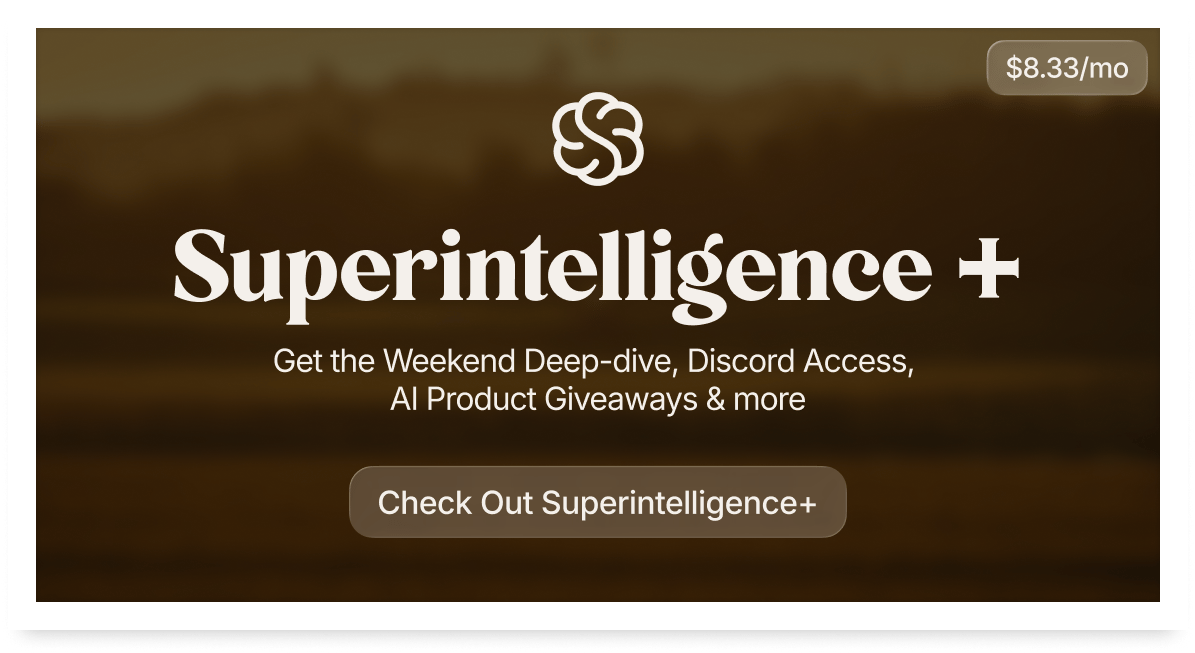
Dear Readers,
Have you noticed how quickly the ground is shifting beneath our feet right now? Every day, something new arrives that forces us to rethink what’s possible — from AI agents running entire research pipelines to models capable of orchestrating complex operations with barely any human direction. Today’s issue follows that pulse: the subtle signs, the bold breakthroughs, and the strange edges where innovation becomes just a little uncanny. If you’ve been wondering what the next leap will feel like, this edition gives you a front-row seat.
We’re exploring NotebookLM’s new “Deep Research” feature which turns sprawling web investigations into structured insights, OpenAI’s work on sparse circuits that could finally make neural networks transparent, and Anthropic’s report on the first major AI-driven espionage campaign — a development that reads like tomorrow’s headlines arriving ahead of schedule. On top of that, you’ll get a closer look at Kosmos, fresh signals from AI finance, and a curated mix of prompts, charts, and stories to spark your curiosity. Let’s dive in — the good stuff starts right below.
In Today’s Issue:
🌌 Edison Scientific's Kosmos AI autonomously conducts scientific research
💰 Mira Murati's Thinking Machines seeks a $50B valuation
💳 AI's surging share in payments M&A doubles in 2025.
💸 Global VC funding for AI surges to $97 billion in Q3 2025
✨ And more AI goodness…
All the best,




NotebookLM Unveils “Deep Research” Feature
NotebookLM just launched its “Deep Research” mode, which can automatically browse hundreds of websites, synthesize the findings into a structured report, and include an annotated list of sources. This means that instead of piecemeal searches and manual organization, users can now let the tool take care of the heavy lifting for in-depth research.

Sparse Models Make AI Legible
OpenAI shows that when you force a neural network to use far fewer connections (“sparse circuits”), the model becomes easier to understand because each small circuit does a clearer, more specific job. Dense models behave like a tangled web, but sparse ones form cleaner, separable components that researchers can actually trace. This could make future AI systems both powerful and far more interpretable.

AI-Agents Orchestrate Global Espionage Campaign
Anthropic reports that in September 2025 a Chinese state-linked threat actor used its AI system Claude Code to conduct cyber-espionage against around 30 organizations— including tech firms, banks, chemical manufacturers, and government agencies —executing 80–90 % of the attack autonomously. The campaign marks what Anthropic claims is the first documented large-scale hack driven largely by AI agents acting with minimal human oversight.


Steam Hardware Announcement: The Steam Machine


Inside the Kosmos Breakthrough
The Takeaway
👉 Kosmos uses a structured world model to maintain coherence over hundreds of agent cycles.
👉 Returns: On average ~79 % of its statements were judged accurate by domain experts.
👉 It has reproduced unpublished human findings and generated novel scientific contributions across neuroscience, materials science and more.
👉 Practical implication: For teams tackling large-scale data + literature problems, a tool like Kosmos could reduce months of work into days — provided human oversight remains.
Here’s something exciting: what if an AI could dive into datasets, read thousands of scientific papers, generate hypotheses, run analyses, and spit out publishable results — all in one go? That’s exactly what Kosmos from Edison Scientific does. According to their paper, Kosmos executes up to ~42,000 lines of code, reads about 1,500 academic papers, and completes full research campaigns in under 12 hours — tasks that would take months for human scientists.

What sets it apart is a “structured world model” that keeps track of entities, relationships and open questions so Kosmos doesn’t lose coherence even across hundreds of agent roll-outs.
This matters because it pushes the frontier of agentic AI and scientific automation: no longer just chatbots or assistants, but AIs that meaningfully collaborate in research workflows. It signals new possibilities (and risks) for how discovery may evolve.

Why it matters: it shows that AI is not just a tool for automation but a potential research co-pilot that accelerates human science It also invites us to rethink what “doing science” means when machines take on part of the load.
Sources:
🔗 https://edisonscientific.com/articles/announcing-kosmos


Find your customers on Roku this Black Friday
As with any digital ad campaign, the important thing is to reach streaming audiences who will convert. To that end, Roku’s self-service Ads Manager stands ready with powerful segmentation and targeting options. After all, you know your customers, and we know our streaming audience.
Worried it’s too late to spin up new Black Friday creative? With Roku Ads Manager, you can easily import and augment existing creative assets from your social channels. We also have AI-assisted upscaling, so every ad is primed for CTV.
Once you’ve done this, then you can easily set up A/B tests to flight different creative variants and Black Friday offers. If you’re a Shopify brand, you can even run shoppable ads directly on-screen so viewers can purchase with just a click of their Roku remote.
Bonus: we’re gifting you $5K in ad credits when you spend your first $5K on Roku Ads Manager. Just sign up and use code GET5K. Terms apply.



Thinking Machines in Talks for $50B Valuation
Mira Murati’s new AI startup Thinking Machines is reportedly seeking a $50B valuation, up sharply from $12B just months ago, signaling one of the fastest value-accretions in the current AI cycle. The deal shows how capital markets increasingly treat frontier-model labs as future “infrastructure monopolies,” shifting valuation logic away from SaaS multiples. If the round closes, it could reset private-market pricing for next-gen AI labs and accelerate consolidation pressure across the entire ecosystem.

AI’s Surging Share in Payments M&A
In 2025, nearly 9% of all payments-sector M&A involved AI firms — almost double last year — driven mainly by fraud-detection, risk automation, and B2B payment agents. This reflects a structural shift where AI becomes core infrastructure in transaction processing, compressing margins for legacy providers while boosting scale advantages for AI-native platforms. Investors are now pricing payments companies by their AI leverage rather than pure volume growth.

Global VC Funding for AI Surges in Q3 2025
In Q3 2025 global venture funding hit about US $97 billion, up ~38 % year-on-year, largely driven by massive rounds in the AI sector. This surge marks AI not just as a niche theme but as a dominant capital-allocation target, shifting the risk/return calculus for investors and increasing pressure on startups to scale quickly. For markets, it suggests a rising liquidity tide for AI-capex that may amplify valuations, drive consolidation, and necessitate regulatory attention to potential bubble dynamics.






